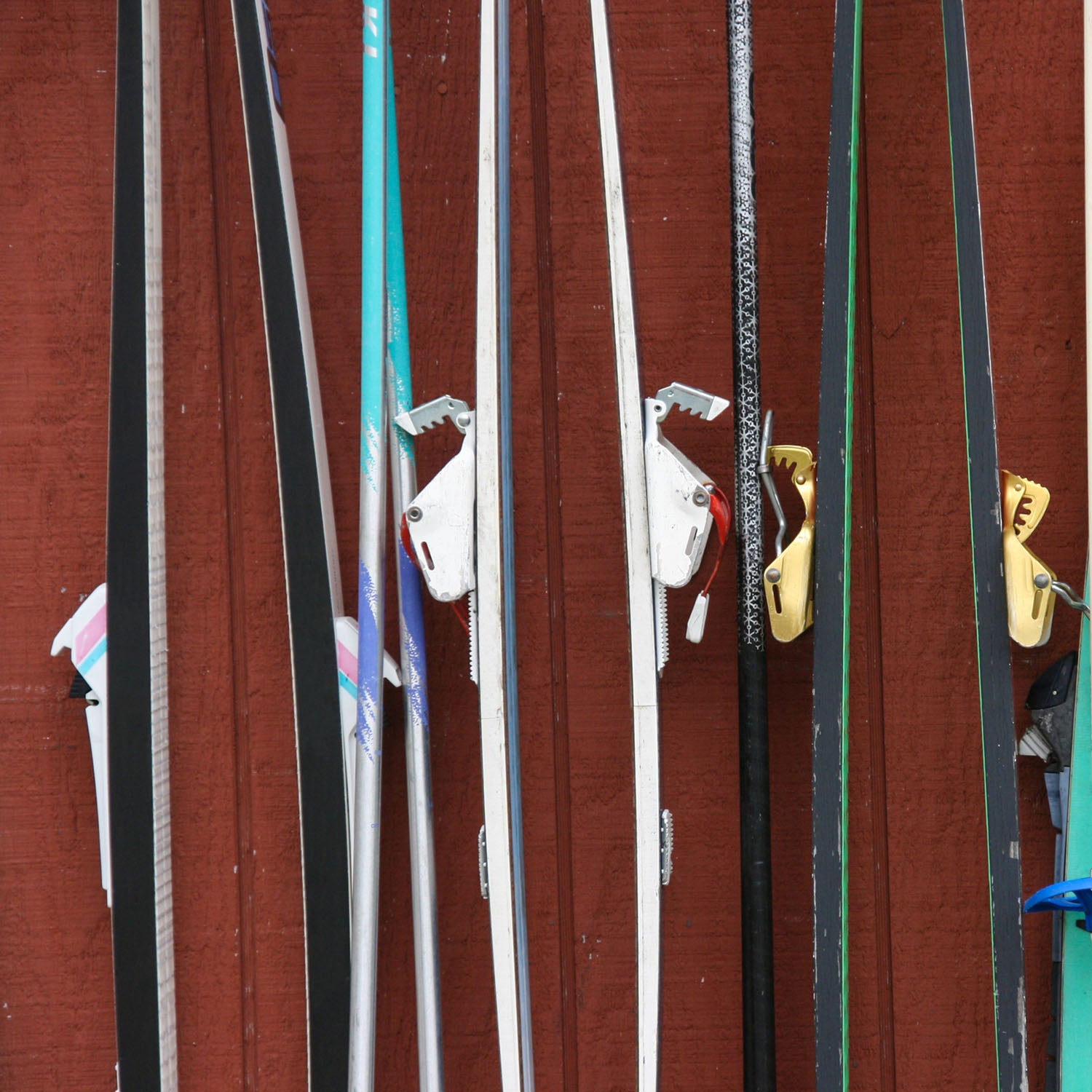The year I moved from beachy San Diego to the foothills of the Rocky Mountains in Boulder, Colorado, I decided to learn how to skate ski. All the endurance athletes around here are doing it, I thought, and I considered myself among that crew. I rented a pair of slightly banged up Fischer SCS demo skis from the local outdoor shop and headed to North Boulder Park, where, graciously, the Boulder Nordic Club grooms skate and classic tracks when enough snow falls in town. I had no idea what I was doing, but I hacked my way around.
I’d fall and I’d get back up. I’d watch all the much better skiers and try to mimic them, my arms and legs flailing about.
I kept at it on those beater skis and bought them for cheap at the end of that season. I skied on them for years. I got better, and eventually, I wasn’t the slowest person at North Boulder Park. The movement of skate skiing—and improving at it—became addicting. I had fallen in love with it and looked forward to winter when I could kick my own ass skating laps around the park (anyone who’s ever tried skate skiing knows it’s a remarkably efficient way to get in a full-body anaerobic workout).
Years later, I got myself a pair of fancy skis. My Madshus Redline 3.0 skate skis make me a little embarrassed when I take them into the shop to get waxed. I don’t feel worthy of them. I get the sense the skis feel the same way. I have a hard time controlling their lightness, their speed. I’m so used to my old setup from 21 years ago that even after a couple winters of owning the new, top-of-the-line pair, I have some living up to do.
I’ve asked a couple experts why I have a hard time with my new skis. I was taking a winter biathlon lesson at Colorado’s Devil’s Thumb Ranch, where a seasoned instructor named Jon taught me how to shoot a rifle at a target and eyed my fancy skis. I told him they felt a little unwieldy to me. He nodded, knowingly, and pointed to my boots.
The new skis had a new binding system, which I was upset about when I first got them as I had to buy new boots that were compatible. I didn’t want to spend a lot so I got an almost-entry-level pair. Big mistake. Lower-end boots on high-end skis is a bad combination, and I should know better. Energy transfer from foot and body to the ski needs to be as efficient as possible to control a fast, light ski. Lower-end boots tend to be more comfortable than high-end boots, but that also means that there’s more interior padding, which can absorb energy. As soon as Jon mentioned as much, I could not get the idea of my boots holding me back out of my head.
Once I invested in higher-end boots to match my higher-end skis, my skate technique got a little less sloppy. But after two years on my new kit, I still feel like I’m trying to catch up to my gear. And I still, sometimes, reach for my old skis and old boots.
I’m not alone, it turns out. Ex-professional Nordic ski racer David Norris is sponsored by Rossignol and coaches at Steamboat’s esteemed Winter Sports Club, which regularly turns out Olympians. “All through high school and college I trained on ten-year-old beaters,” he says.
And now, despite owning a fleet of top-of-the-line race skis, he reaches for his older skis regularly, though he admits that’s mostly about what he’s willing to ding up in non-ideal conditions. “My fleet of skis are sort of organized like this: ‘rock-rock skis,’ ‘rock skis’, training skis, and race skis.”
I’m not a pro, so my personal fleet of skis are organized like this: ‘skis I aim to grow into,’ and ‘skis I’m comfortable on.’ I don’t want to ding up my old Fishers. I love them. (And according to Jon at Devil’s Thumb, those Fisher SCS skis were perhaps ahead of their time.)
If I entered a race, I suppose I’d reach for my new, fast skis, and hope I could manage my body well-enough to match them. Although, my old skis did carry me through a race in which I was over-my-head years ago. Fun and somewhat ridiculous story: In 2006, I found myself racing in the Winter Triathlon World Championships—running on snow, riding a mountain bike on snow, and skate skiing (on my old demo skis)—in Sjusjøen, Norway, and I wasn’t last.
My point is this: If you want to get into Nordic skiing, any old skis will do—at least initially. You don’t need to shell out big bucks to try skate or classic skiing. I don’t regret buying my initial pair of demo skis. Those beater skis were my gateway to a sport I now love. But when the time comes to upgrade to better gear, prepare yourself for a learning curve.
Nordic Gear Shopping Tips from a Pro
Winter Sports Club coach and ex-pro Norris emphasizes that, “older skis or a level below top-of-the line are still quite good,” and that, “old gear won’t negatively impact a skier’s experience.” (I am a personal testament to that.) He offers these pointers for those considering getting into skate or classic cross-country skiing this season:
Attend your town’s local ski swap.
“Most every ski town has a ski swap,” he says. “The swaps generally have good deals and often serve as a fundraiser for something such as the local high school team. A few hundred bucks at the right swap could get you a full skate set up.”
Find boots that you’re happy with and double-check that the boots match up with the bindings of the skis you buy.
Older skis often have outdated bindings (SNS Pilot) that aren’t compatible with today’s boots, which are mostly made for the NNN (New Nordic Norm) system. Make sure your boots and skis match up, “especially if you’re getting a Frankenstein set-up at a ski swap or on Facebook Marketplace/Craigslist,” notes Norris.
Don’t worry about great poles.
The difference in higher-end poles is mostly in weight and stiffness to maximize power transfer. “Every skier would be very happy with the level of pole one or two steps below top-of-the-line,” says Norris. “You get massive price savings and, functionally, they work well.”
Lastly, know that a Nordic ski pass tends to be much more reasonable than an alpine ski pass. “Once you get your ski gear,” says Norris, “you should have years of fairly low-cost fun and awesome exercise.”


